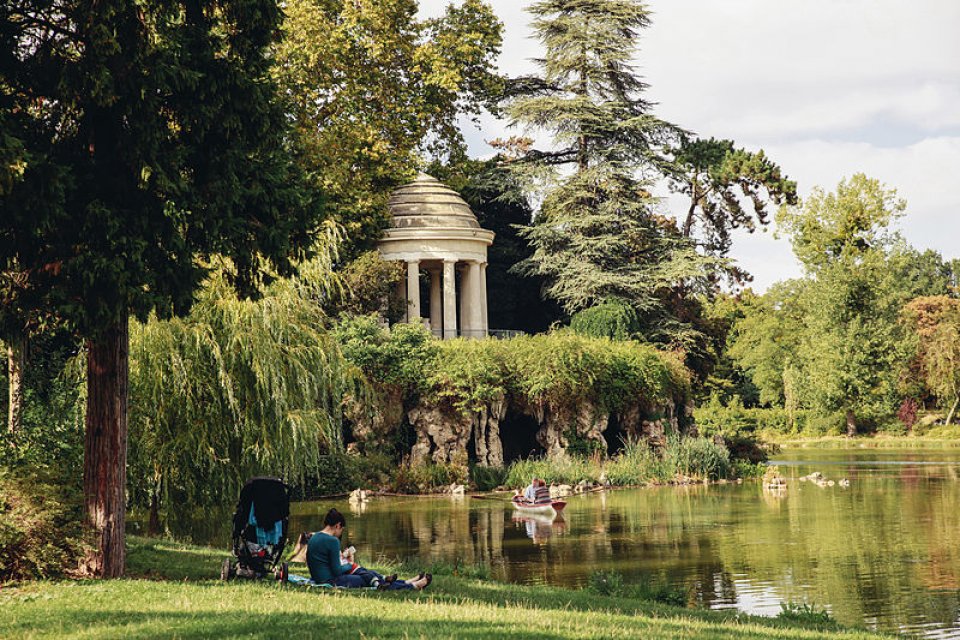
Biogeographic region: Atlantic
Surface area: 99.5 km²
Country: France
Region/Province: Paris, Île-de-France
Located in the east of Paris, the Bois de Vincennes (“Vincennes forest”) is an urban park where a mix of landscapes, as well as several leisure, athletic and cultural facilities, can be found. The “natural” areas make up for about 850 ha of the park and facilities take 150 ha. The mix of landscapes consists of two forest massifs, several prairies, two English landscape gardens, four lakes and a few water streams. The park’s facilities include a zoo, an arboretum, a botanical garden, a horse-racing track, a bicycle-racing track, and a sport campus.
The park’s history is tied to the Vincennes Castle (located in the north of the park): Previously belonging to the ancient forest belt that surrounded the Gallo Roman city of Lutecia (now Paris), the Bois de Vincennes was successively the property of the Church, of the Kings of France, and of the French State until the 19th century when the State donated the area to the City of Paris on the condition that the city maintained it and made it a “pleasant place for walks and entertainment for the industrious masses of eastern Paris”.
Today, the City of Paris continues to maintain the Bois de Vincennes while also supporting environmental programmes. The park’s managers preserve and attempt to foster biodiversity by creating the conditions for the development of certain species (birds, amphibians, mammals, insects, plants), by mitigating the presence of visitors in some reserve areas, and by implementing circular principles in management practices all along the way. The Bois de Vincennes is home to several hundred species of plants, fungi, insects, birds, small mammals and amphibians.
- Pollution mitigation (carbon sequestration; microclimate regulation, solution against urban heat island effects),
- Biodiversity enrichment (preservation and enhancement of fauna and flora habitats),
- Leisure and cultural purposes (recreational value, aesthetic pleasure; sense of place, inspiration) and encouraging citizen’s engagement with local green initiatives.
- Reducing temperature at meso or micro scale
- Carbon sequestration and storage
- Increase Biodiversity
- Increase accessibility to green open spaces
- Increase awareness of NBS solution & their effectiveness and co benefits
- Increase well-being
- Provision of health benefits
- Social learning about location & importance of NBS
PRINCIPLE UF-NbS (Urban Forests as Nature-Based Solutions) ACTION(S)
- Creation of conditions for the spread of certain species (dry rocks, dead branches, ponds, water streams, etc.)
- Natural zone of ecological interest, fauna and flora (Zone naturelle d’intérêt écologique, faunistique et floristique (ZNIEFF))
- Birds reserve, “witness” plots;
- A "green buffer" connecting the eastern suburbs of Paris;
- An interplay of ecosystems which exhibit a variety of habitats, plant and animal species;
- Home and refuge to many birds, small mammals, insects and amphibians;
- So-called "green lung" of the east of Paris;
- Climactic regulator for the region against urban heat island effect;
- Recreational area for the population.
OTHER PRINCIPLE NbS ACTION(S) – non-UF
- Encourage engagement of citizens with local green and green initiatives (educational programmes, shared gardens);
- Provide a foundation for spiritual, scientific, educational, recreational, and visitor opportunities, all of which must be environmentally compatible with circular economy principles.
The Bois de Vincennes is an urban park with a complex history consisting of a mix of landscapes with different degrees of human intervention.
City, regional general funds:
The budget allocated to the management of the Bois de Vincennes is entirely provided by the City of Paris. As such, the money needed for the park takes its origin in the pool of revenues attributed to the City of Paris’ general affairs (taxes, contracts, loans, etc.).
Private sector investment:
The City of Paris is the sole owner of the vast majority of the park’s facilities (sport clubs buildings, restaurants, etc.) and rents them to private actors. The revenues of the rent feed in the city’s general budget which in turn is allocated to the park’s management after decisions taken at the City Council. Hence, private entities finance the park’s management only indirectly.
- Forested areas
- Urban forest
- Urban trees
- Green urban areas
- Pocket park
- Historical garden
- Large urban public parks
- Locally equipped areas for play
- Hedgerows
- Botanical garden
- Arboretum
Éric Lamelot
Head of Division for the Bois de Vincennes
Rond-Point de la Pyramide
75012 PARIS
Email : eric.lamelot@paris.fr
Further information
The compilation of this case study description has been funded by the Horizon 2020 CLEARING HOUSE project. This project has received funding from the European Union’s Horizon 2020 research and innovation programme under grant agreement No 821242.
- 3. Good Health and Well-being
- 11. Sustainable Cities and Communities
- 15. Life On Land
